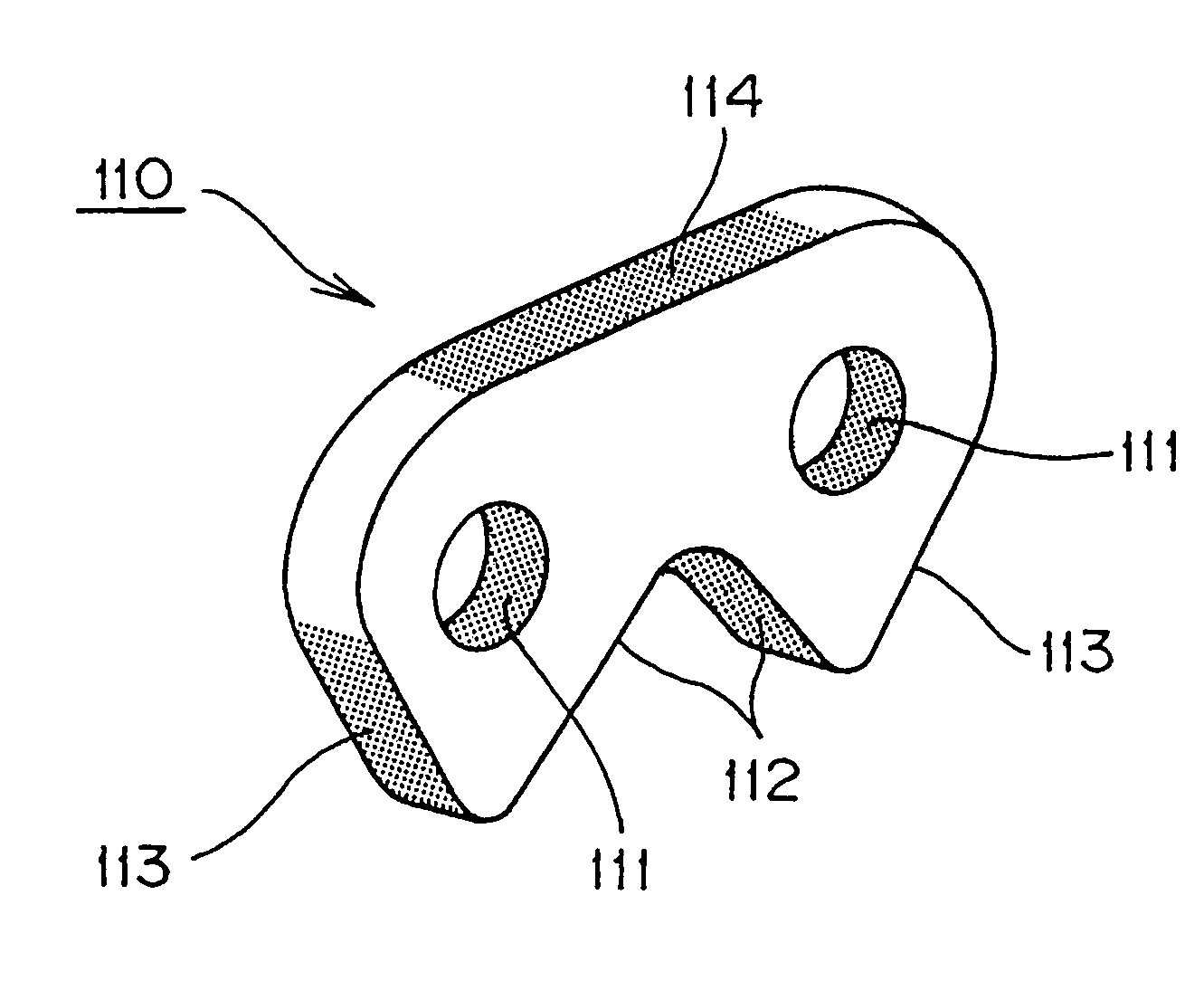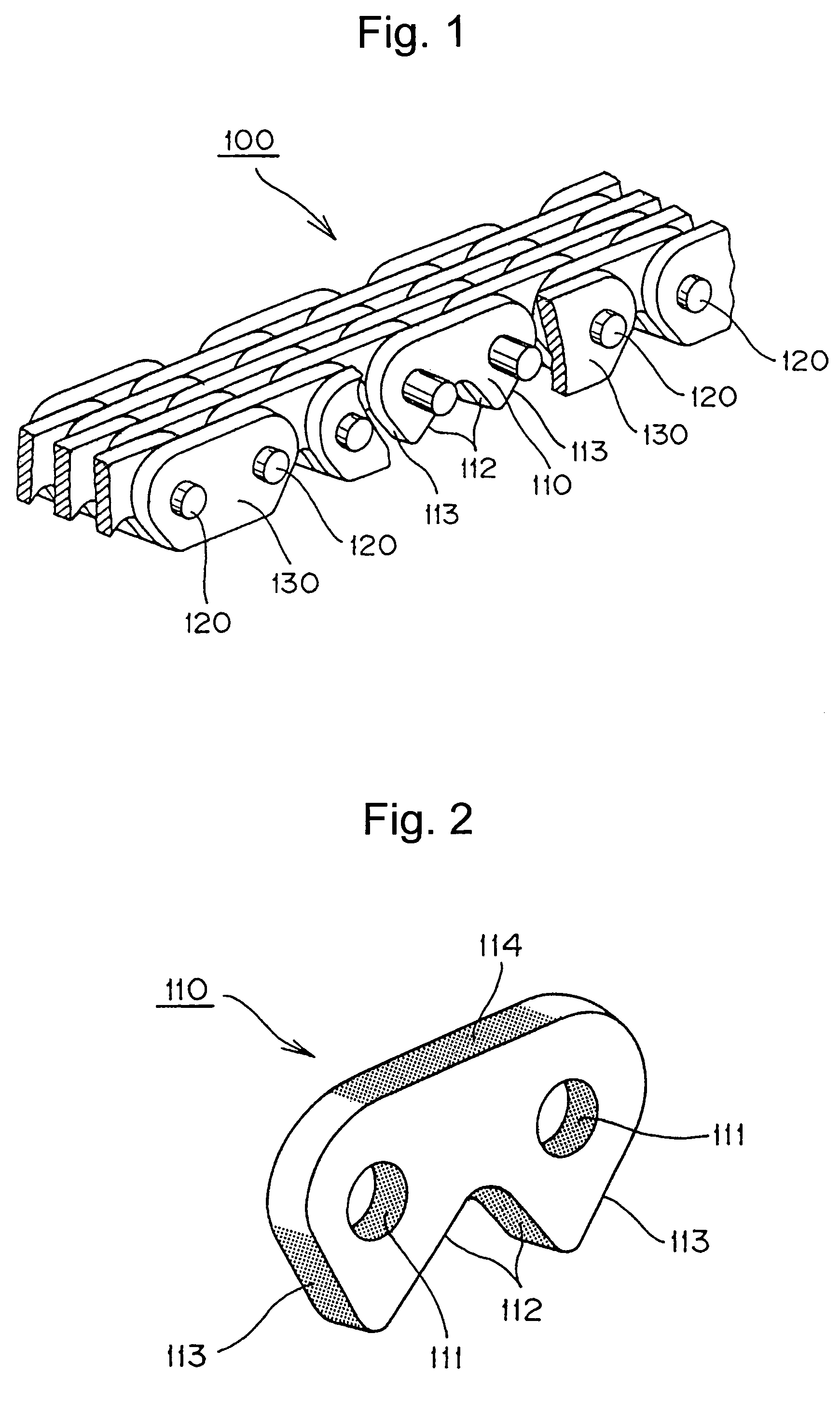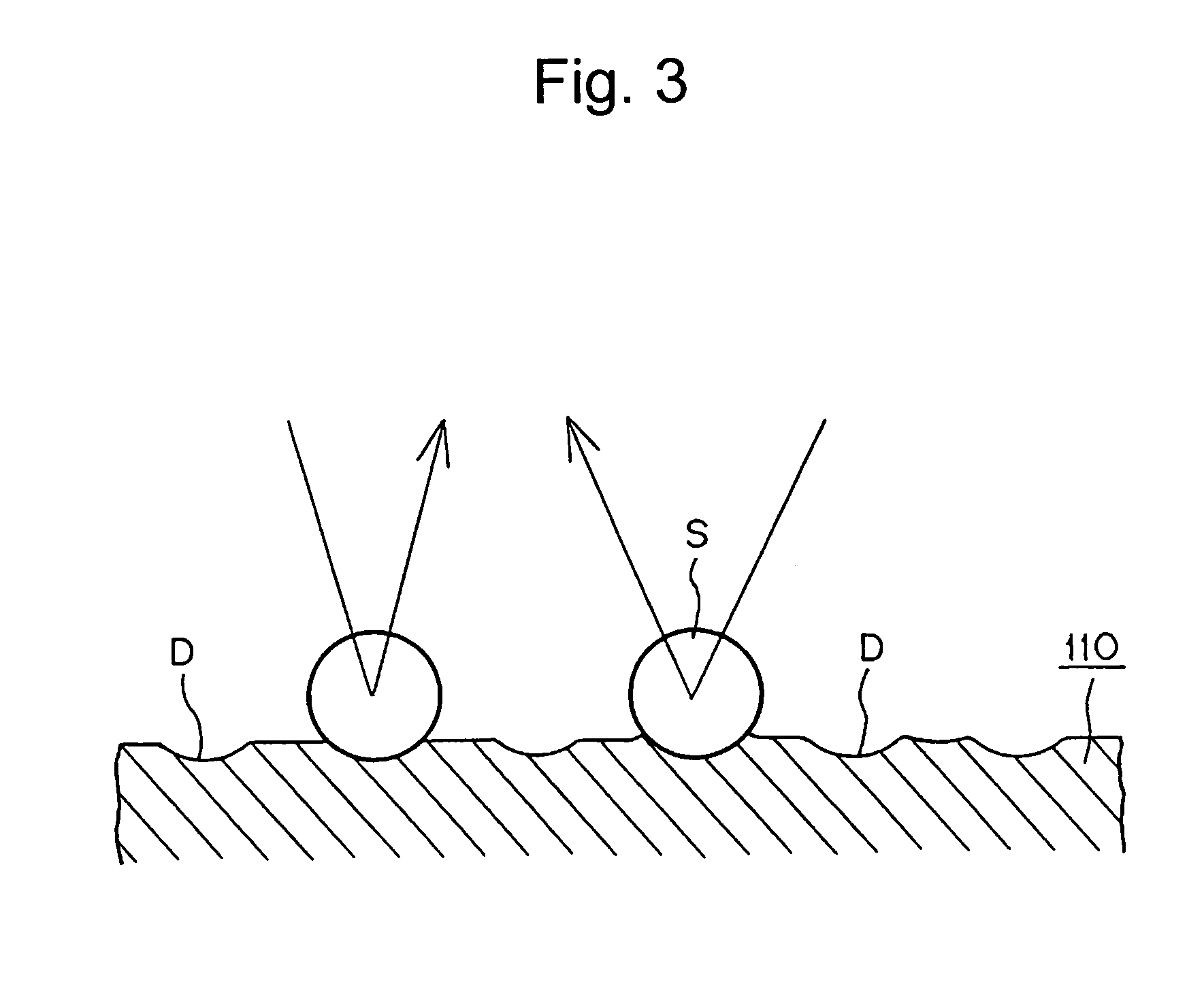Silent chain
a technology of silent chain and pin hole, which is applied in the direction of driving chains, heat treatment equipment, furniture, etc., can solve the problems of “wear elongation” of the chain, impairing engine performance, and so on, and achieves the effect of hardening the surface of the workpiece, removing roughness and shear drops, and improving the surface accuracy of the punched blank
- Summary
- Abstract
- Description
- Claims
- Application Information
AI Technical Summary
Benefits of technology
Problems solved by technology
Method used
Image
Examples
Embodiment Construction
[0021]As shown in FIG. 1, the silent chain 100, in accordance with the invention, is formed by arranging link plates 110 in rows extending widthwise with respect to the longitudinal direction of the chain, interleaving the rows, and connecting the rows by inserting connecting pins 120 through pin-receiving holes in the link plates. The pins fit through the pin-receiving holes in the link plates with a suitable clearance to allow articulation of the chain. However, the pins are fixed to guide plates 130 provided along both sides of the chain at opposite ends of every second link plate row.
[0022]Each link plate has a pair of teeth, and each tooth has an inner surface 112 and an outer surface 113. Depending on the transmission design, inner surfaces 112, outer surfaces 113, or both, can serve as sprocket tooth-engaging surfaces. The link plates also have back surfaces 114 (FIG. 2), which slide on a chain guide, a tensioner lever, or both, in a typical engine timing transmission.
[0023]T...
PUM
| Property | Measurement | Unit |
|---|---|---|
| wear elongation | aaaaa | aaaaa |
| temperature | aaaaa | aaaaa |
| wear elongation | aaaaa | aaaaa |
Abstract
Description
Claims
Application Information
 Login to View More
Login to View More - R&D
- Intellectual Property
- Life Sciences
- Materials
- Tech Scout
- Unparalleled Data Quality
- Higher Quality Content
- 60% Fewer Hallucinations
Browse by: Latest US Patents, China's latest patents, Technical Efficacy Thesaurus, Application Domain, Technology Topic, Popular Technical Reports.
© 2025 PatSnap. All rights reserved.Legal|Privacy policy|Modern Slavery Act Transparency Statement|Sitemap|About US| Contact US: help@patsnap.com



